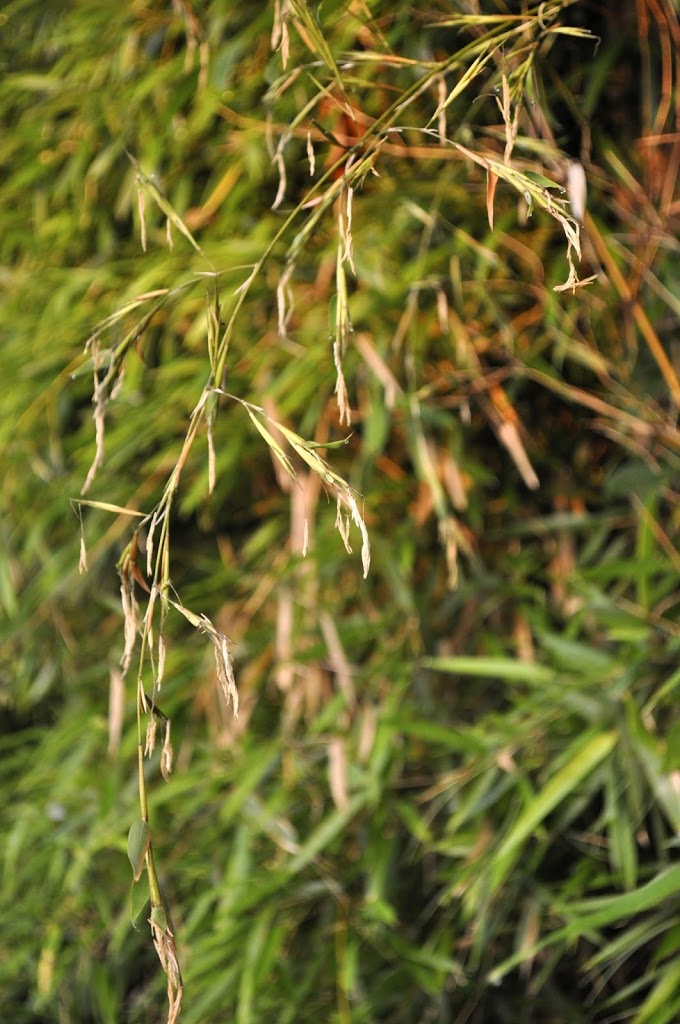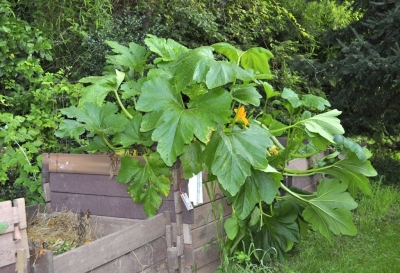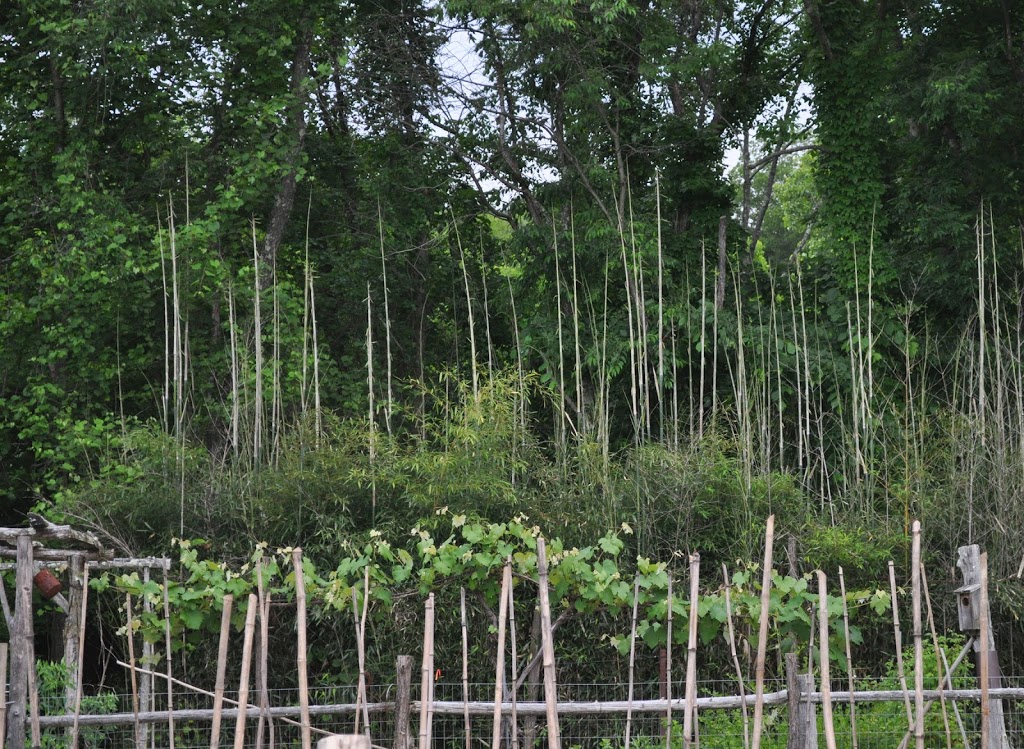Bamboo Death(?) and Zucchini Life
Flowering is desirable in some garden plants (fruit trees, broccoli, and, of course, flowers) and undesirable in others (lettuce, cabbage, and arugula). I’m not sure how I feel about the flowers recently appearing on my bamboo (Phyllostachys aureosulcata). Yes, bamboo! Bamboo typically flowers only after decades of growth, sometimes after more than a hundred years of growth. My bamboo is about 25 years old.
The downside to bamboo flowering is that it weakens, sometimes even kills, the plant. And “the plant” could be a whole grove since bamboo spreads by rhizomes (underground runners). All shoots are connected underground and are, essentially, one and the same plant. Bamboos sometimes flower gregariously, that is,
most or all of them all over the world flower in unison, so death or weakening could be more widespread than my little grove.
Which brings me to what is good about flowering of bamboo: It’s very interesting (but very unspectacular). I’m not too worried about my whole grove dying because I remember starting with a few pieces of bamboo which, perhaps, were not a single clone. Also, lopping off flowering shoots would keep them from draining the rhizomes of energy.
The best thing about the flowering is the possibility of collecting seeds. How exciting. Bamboo from seed. I won’t get my hopes too high because bamboos typically yield very little, in some cases, no seeds. On the other hand, sown in flats, the seeds allegedly sprout within only 3 weeks.
o, does anybody else anywhere have flowers on their Phyllostachys aureosulcata? This species is commonly known as yellow groove bamboo, notable for the vertical, yellow groove on the canes and the bent “knee” often on the lower part of a cane. It’s one of the best bamboos for sturdy canes where winter temperatures plummet below minus 15°F.
——————————————
Searing heat and plenty of rain have made for Amazonian weather here, much to the liking of weeds (even with the “weed less” techniques I use, as described in my book Weedless Gardening). Rains in June were almost 200% higher than the average.
Mostly, what’s involved in weeding here is periodic hand pulling, starting at one end of the garden, then working my way across the garden ripping out main roots and tops of weed plants. I’m spurred on knowing that, for instance, one lamb’s quarter plant can produce over 70,000 seeds, and having noticed the speed with which sharp quackgrass runners spread underground.
I admit to having too much garden, so some neglected areas always get ahead of me. Like that patch of quackgrass growing and spreading happily between a couple of dwarf apple trees. Digging out the quackgrass would be too tedious. Tilling the soil would kill the plants, but many of the chopped up runners would take root and grow into new plants. Tilling would also expose buried weed seeds to light and more air — just what they need to sprout.
My tack is to mow the plants to the ground and cover the area, and a bit beyond, to account for underground spread of runners, with 4 layers of newspaper, overlapped. An alternative cover is grey resin paper, a building product, available on rolls that make the paper easy to roll out and, therefore, useful for larger areas. The paper smothers weeds in place, leaving the roots and tops to rot and enrich the soil.
Sure, the paper looks ugly and can blow away. That’s why I wet it as soon as it goes down, then cover it with mulch, wood chips, in this case, because I happen to have a pile of wood chips available.
This method of killing weeds is effective, easy, quick, and I can immediately plant something — a second crop of zucchini transplants is my plan — in the mulch. As long as everything is kept moist, roots of the transplants can grow into the mulch and then into and down through the wetted paper into the moist earth below.
——————————————
My first crop of zucchini, from transplants seeded in early May, is growing like gangbusters. And it’s no
wonder, given the weather and their being planted right in the compost piles. Nutrients, warmth, and water: What else would a warm-weather plant need?
The compost piles are covered with EPDM rubber roofing material to seal in moisture and heat, and to keep out weed seeds. I cut two square flaps, each about 3 inches square, into the EPDM in which to “plug in” the transplants. The compost, in addition to offering a smorgasbord of nutrients, also clings tenaciously to water, so the zucchini plants need essentially no care.
In contrast, some care will be needed for the zucchini transplants that will go into the mulch between the apple trees. They’re at ground level, just right for rabbits, and the soil there is nowhere near as rich or moisture-retentive as pure compost. Then again, one can have too many zucchinis.








